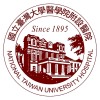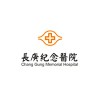
Incidence of Acute Cerebrovascular Events Using Either Minimized or Standard Cardiopulmonary Bypass...
Coronary Artery DiseaseAcute Cerebrovascular Accident3 moreThe prospective, randomized, two centre study investigates acute cerebrovascular events during extracorporal circulation and the early post operative outcome when using either the minimized cardiopulmonary bypass circuit (ROCsafeTM) or a standard cardiopulmonary bypass circuit in patients undergoing coronary artery bypass grafting.

Robot-Assisted Therapy in Stroke Patients
Cerebrovascular AccidentsStrokeThis project consists of two parts: Robotic Rehabilitation Trials, and Study of Outcome Predictors and Clinimetric Attributes. In the first part of study, the investigators aim to (1) investigate the treatment effects of robot-assisted therapy (RAT) in patients with stroke on various outcomes, (2) test the dose-response relations by using two different intensities (higher versus lower intensity RAT), and (3) investigate the effects of the training intensity on a biomarker of oxidative stress. Treatment outcomes will encompass the spectrum of functioning including motor ability, motor control strategies, basic/extended daily functions, mobility, community reintegration, quality of life, and biomarker (8-OHdG). In the second part of study, the purposes are to define the appropriate populations for RAT and to examine the clinimetric properties of clinical measures relevant for use in robotic rehabilitation research. the investigators will identify the clinical predictors that will potentially influence the functional outcomes after interventions. Finally, the investigators will examine and compare the clinimetric properties (e.g., validity and responsiveness) of the clinical measures of rehabilitation outcome to inform selection of test instruments that may detect clinically meaningful change after rehabilitation therapy.

Study of the Pathogenesis and Molecular Mechanism of "YURE" in Internal Intractable Diseases
StrokeThe purpose of this study is to determine whether the Chinese herbs formula is effective in the treatment of hemorrhagic stroke and to find out Chinese pathogeny and pathogenesis in the disease.

Effects of Combined Cognitive Training With Aerobic Exercise in Stroke Patients With MCI
StrokeCognitive impairments have severe impact on functional recovery and quality of life after stroke. Current evidence indicated that combining exercise and cognitive training may provide additional benefits on cognition in stroke. This study aims to investigate the effects and mechanisms of two combined methods of computer-based cognitive training with physical exercise in stroke patients with cognitive impairments.

Effects of Upper Extremity Rehabilitation Robot and Transcranial Direct Current Stimulation Among...
StrokeEffects of upper extremity rehabilitation robot and transcranial direct current stimulation on upper extremity function among subjects with tremor after stroke

Implementation of Supportive Sling Device in Adults Post-stroke for Prevention of Shoulder Complications...
Cerebrovascular AccidentUpper limb (UL) impairment is a common deficit following stroke with only an estimated 20 per cent of patients recovering function.

LOTUS: Global Acute Stroke Study Utilizing Penumbra System
StrokeIschemicThe primary objective of this study is to demonstrate safety and effectiveness of the Penumbra System in a population with acute ischemic stroke (AIS) secondary to intracranial large vessel occlusion (LVO).

Efficacy and Safety of rTMS Plus Rehabilitation for the Improvement of the Upper Extremity in Stroke...
StrokeArm ParalysisThe rehabilitation of the upper limb after a stroke is a challenge due to its complexity and the important cerebral representation of it, particularly of the hand. Repetitive transcranial magnetic stimulation (rTMS) is a tool that can broaden the effect of rehabilitation and thus appears to be observed in different studies performed in patients in chronic phase. However, there are little data on its usefulness before 6 months after the stroke. The variability in the presentation, the fact that it is a phase where the motor deficit of the upper limb coexists with other deficits and medical problems partly explain the lack of specific studies. The investigators present here a preliminary study on the efficacy of rTMS associated with the rehabilitation program of the paretic upper extremity due to a stroke in comparison with sham rTMS. Patients (with moderate to mild involvement) will be randomly distributed in the two study groups and will be evaluated both clinically and neurophysiologically before and after the sessions to try to demonstrate if there is a positive effect in a safe manner.

Optical Coherence Tomography Guided Antithrombotic Treatment After Endovascular Thrombectomy of...
Stroke of Basilar ArteryOptical Coherence Tomography2 moreEvidence regarding the role of early (<24 hours) antithrombotics post-revascularization with either intravenous thrombolysis (IVT), endovascular thrombectomy (EVT), or a combination of both remains scarce. In 2018 the American Heart Association/American Stroke Association changed their recommendation, stating that the risk of antithrombotic therapy within the first 24 hours after treatment with IVT (with or without EVT) is uncertain. This was changed after data emerged that early antithrombotics may be safe and may improve outcomes in select patients undergoing EVT. Recently the investigators showed for the first time that significant residual basilar thrombus can exist after EVT despite complete angiographic revascularization using endovascular optical coherence tomography imaging. This residual thrombus could cause ongoing function-limiting strokes with occlusion of vital basilar perforators after EVT. Therefore, the investigators propose a prospective,non-randomized safety study to evaluate optical coherence tomography guided antithrombotic management for patients with confirmed residual thrombus after EVT for basilar occlusion.

Effect of Pilates Training on Cognitive Functions in Patients With Stroke
StrokeThe purpose of the present study is to investigate the effect of pilates training on cognitive functions in patient with stroke
